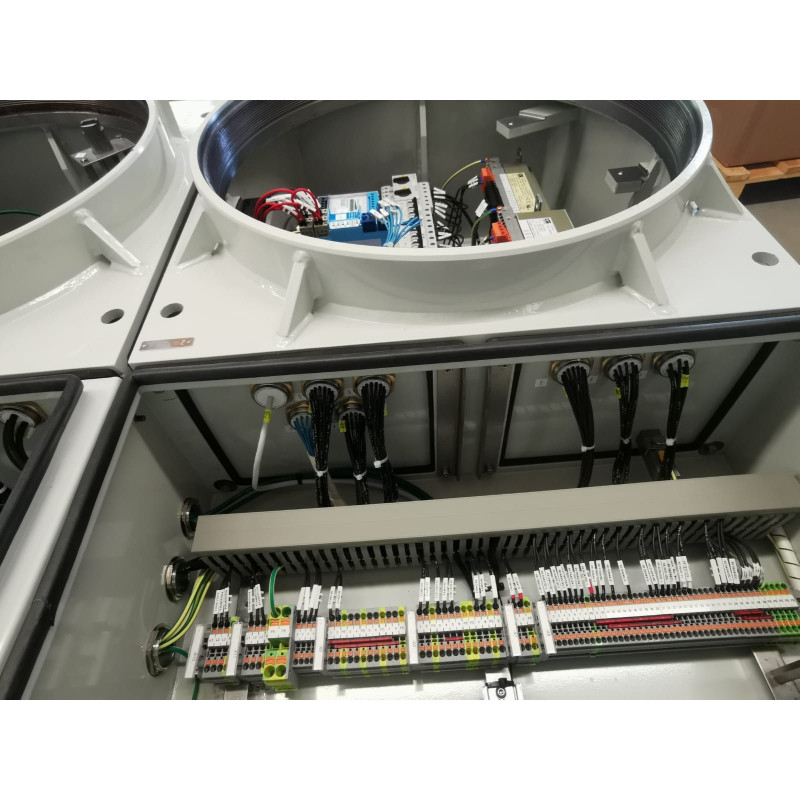

Category


Photos are for informational purposes only. View product specification
please use latin characters
The protection method involving the isolation of an explosion prevents flames from escaping outside the installation where the explosion occurred. In the absence of this type of protection, there is a risk that escaping sparks or flames will become effective ignition sources for the surrounding explosive atmosphere within the installation.
Application: The NOVEx II series is a protection system consisting of a passive flap valve for cutting off combustible dust explosions, certified according to harmonized standards EN16447:2014 and EN15089:2009. NOVEx II valves are used to halt the spread of an explosion from dust filters to the inlet of contaminated air and/or the outlet of clean air. In this case, the filter must be additionally protected with explosion panels or explosion suppression.
Basic Information:
Dimensions and Versions: NOVEx II return valves with ATEX certification are available in popular sizes from DN100 to DN1250 (DIN 24154/R2, T2). Options include ANSI flanges, detection of open and/or closed valve positions, product deposit detection, automatic cleaning system, valve wear detection, pressure drop monitoring ring, for vertical installation.
Characteristics:
Available Options:
Special Features – Available Solutions:
Pressure Drop – For Versions A and S:
Order Code:
In an unprotected system, it's not the first explosion that causes the most damage, but subsequent secondary explosions. Explosion suppression and explosion-proof construction solve a significant part of the problem, but in both cases, isolation remains crucial. Several methods are available on the market to implement this idea.
Isolation through Existing Process Elements: Several types of explosion isolation can be chosen. Sometimes existing process elements such as rotary valves, roots blowers, screw conveyors, double block and bleed valves, or check valves can be utilized.
Isolation through Passive Elements: We also offer a wide range of passive elements: flame arresters, quick-closing valves VENTEX, and explosion relief chimneys. They operate without external detection or control.
Isolation through Active Elements: There are also several active systems that help stop explosions, such as rapidly closing gates, chemical barriers, fire valves, and switching valves. All are controlled by a detector above the control system.
Availability: Please be advised that this product is out of stock
You can place a pre-order, report your interest in the product by clicking the "Ask for availability" button.
The protection method involving the isolation of an explosion prevents flames from escaping outside the installation where the explosion occurred. In the absence of this type of protection, there is a risk that escaping sparks or flames will become effective ignition sources for the surrounding explosive atmosphere within the installation.
Application: The NOVEx II series is a protection system consisting of a passive flap valve for cutting off combustible dust explosions, certified according to harmonized standards EN16447:2014 and EN15089:2009. NOVEx II valves are used to halt the spread of an explosion from dust filters to the inlet of contaminated air and/or the outlet of clean air. In this case, the filter must be additionally protected with explosion panels or explosion suppression.
Basic Information:
Dimensions and Versions: NOVEx II return valves with ATEX certification are available in popular sizes from DN100 to DN1250 (DIN 24154/R2, T2). Options include ANSI flanges, detection of open and/or closed valve positions, product deposit detection, automatic cleaning system, valve wear detection, pressure drop monitoring ring, for vertical installation.
Characteristics:
Available Options:
Special Features – Available Solutions:
Pressure Drop – For Versions A and S:
Order Code:
In an unprotected system, it's not the first explosion that causes the most damage, but subsequent secondary explosions. Explosion suppression and explosion-proof construction solve a significant part of the problem, but in both cases, isolation remains crucial. Several methods are available on the market to implement this idea.
Isolation through Existing Process Elements: Several types of explosion isolation can be chosen. Sometimes existing process elements such as rotary valves, roots blowers, screw conveyors, double block and bleed valves, or check valves can be utilized.
Isolation through Passive Elements: We also offer a wide range of passive elements: flame arresters, quick-closing valves VENTEX, and explosion relief chimneys. They operate without external detection or control.
Isolation through Active Elements: There are also several active systems that help stop explosions, such as rapidly closing gates, chemical barriers, fire valves, and switching valves. All are controlled by a detector above the control system.
Your review appreciation cannot be sent
Report comment
Report sent
Your report cannot be sent
Write your review
Review sent
Your review cannot be sent
